In this tip:
- Introduction
- For sale (on the market)
- A)# Shift fall tray with 3 “special” drop tubes
- B)# Nylon cord with distance marks
- C)# Sowing with this tool
- D)# Making the tool
.
Here is info about sowing tools (for sale) and my sowing tool designs.
.
Introduction
When you want to sow seeds every …. centimeters (every … inch), you can use a sowing tool. Very handy when sowing tiny, dark colored seeds, like leeks, onions or carrots.
.
For sale (on the market)
There are many seeding tools for sale. Below a list of tools found on the internet. I added some remarks.
1. Transparent plastic tube with push button and seed outlet. When pushing the button, seed outlet changes from closed to narrow or wide opening. For example Mini-Seedmaster or Super seeder .
Two video’s: Video Mini-Seedmaster or Video Super Seeder .
2. Small plastic box with one small seed outlet. “Just fill tap and go”. This tool: Seed Dial Tool
Video: Video Dial hand seeder
3. Hand-held bulb vacuum seeder with hollow needle. See Tenax Pro Seeder .
4. Tiny V-shaped shovel with seed hole and tooth wheel. Turn the tooth wheel to vibrate and to transport the seeds to the end of the shovel. This tool: Vibrating seeder .
Video of tool 3 and 4: Video Vibra en Tenax
5. Vibrating hand held seeder Vibro hand seeder .
Video: Video vibro hand seeder
6. Home made sower, a hollow needle and a small hose attached. Suck the small hose to pick up the seed with the hollow needle. Stop sucking to drop the seed.
Video not available anymore.
7. Home made sower, a piece of conduit pipe.
Video: Video Conduit pipe tool
8. Home made envelope seeder.
Video: Video Envelope seeder
9. Plastic gutter with sowing holes Easy seeder
Video: Video Easy seeder
.
Properties and characteristics of these sowing tools:
- Tool 1,2,4,5 and 7; every time, one or more seeds fall out of the tool at the same time. Now and then seeds fall “next to the intended sowing spot”.
- Tool 3 and 6; every time you pick up 1 desired seed and drop it on the desired sowing spot. Sometimes the seed drops too early.
- Tool 8; every time you shove 1 seed to the desired sowing spot. Now and then seeds fall or roll “next to the intended sowing spot” (adhesive tape in the video).
- Tool 9; the gutter is short and needs lots of displacement. Now and then there are no seeds or more than 1 seed in a gutter hole.
.
Design by Sjef
In this tip I use these terms;
- a “drop hole” is the hole in the bottom of the tray where the seeds fall through.
- a “drop tube” is the tube under the drop hole through which the seed falls from the tray to the soil.
- a “conduit pipe” is a piece of PVC electric conduit pipe.
.
I invented this sowing tool in 2014.
Shove drop tray with 1 (or more) drop tubes:
Use a finger to shove 1 (or more) seed(s) to a drop hole. The seed follows the drop tube and falls (almost exactly) on the desired sowing spot. The tool can also be used by visual impaired or blind people.
In tip 34, a tray with 1 drop tube is described.
In this tip, I describe a tray with 3 drop tubes.
.
A)# Shift fall tray with 3 “special” drop tubes
In the bottom of this tray there are 3 drop holes. The tray is too narrow to have 3 drop holes in a row. So they are positioned in a “triangle”.
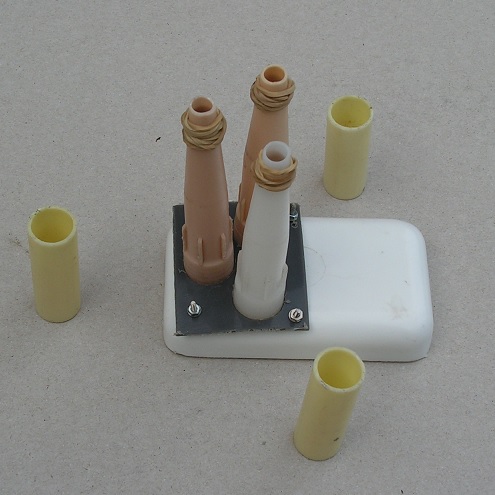
The drop tubes are made of silicone nozzles. There is a short piece of conduit pipe over each drop tube. Elastic band round the drop tube clamps the conduit pipe and keeps the conduit pipe at a fixed distance from the drop tube.
The end of each conduit pipe is about 1/5 inch (5 mm) longer than the nozzle.
Due to this construction, the drop tubes stay open during sowing on moist soil. Garden earth sticks to the conduit pipe, but the drop tube stays open.
.
B)# Nylon cord with distance marks
Very useful at sowing: a nylon string of about 2 millimeters (1/12 inch) thick with a knot every 10 centimeters (4 inch).
More info about this string at the end of this tip. Or at tip 2) Simple tools and tips nr 64.
.
C)# Sowing wit this tool
At my seeding tool you decide:
- which seed is sown,
- when this seed is sown and
- where the seed falls on the soil (within a round print with a diameter of 16 millimeters (5/8 inch).
- During sowing, hold the tray with one hand.
- Again and again put the conduit pipes “carefully” on the garden soil near a knot in the string. Don’t push the conduit pipes into the soil.
- Use a finger to shove seed(s) towards the sowing holes and let them fall through.
- Lift the tray and put it at the next sowing spot. Sow seeds there.
- Continue until you have sown enough.
Round prints of conduit pipes in moist garden soil. Within each round print there is a black seed, marked with a yellow circle.
Scatter a layer of moist garden earth on the seeds. You can do that via the bottom holes of a little flower pot.
Cover the furrow with fabric, board or plastic plate. To prevent the seeds from drying out or washing away during heavy rain.
.
C1) Sowing a seed mixture on quartz sand
You can put carrot seeds and onion seeds in the tray.
Sowing results on quartz sand: alternating onion seeds and carrot seeds. When you want to sow like this.
.
C2) Sowing tiny seeds with the tray
You can put tiny seeds in the tray, for example Snapdragon seeds.
Snapdragon seeds sown on quartz sand using the shove drop tray.
.
Using this tool, you can sow tiny seeds too. Or sow 2 different seeds “simultaneously and yet separately”.
.
D)# Making the tool
Making this shove drop tray with 3 drop tubes is similar to making the tray with 1 drop tube, see tip 33 . Below extra photos and text about making and fastening the drop tubes.
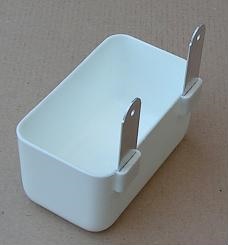
Widowhood cup.
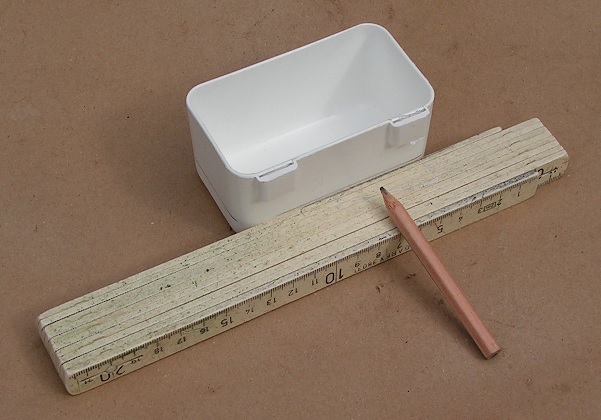
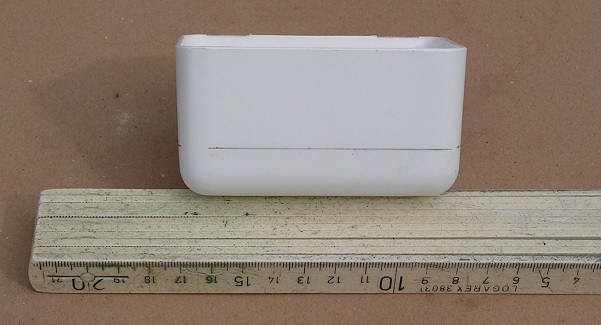
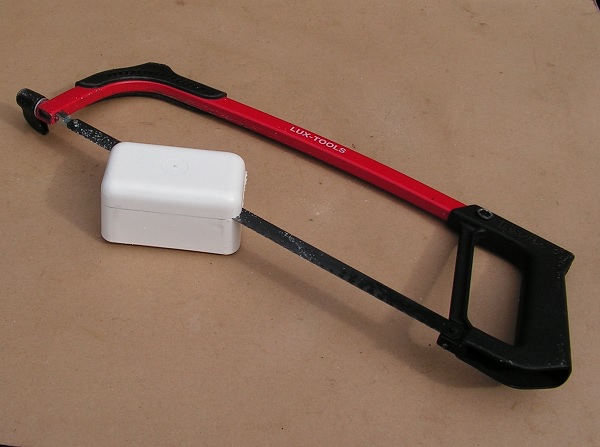
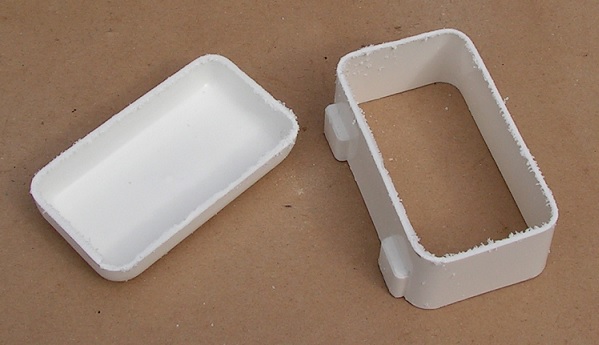
You can make the tray in this way. Remove plastic flakes from the edge of the tray (scissors, knife or sand paper).
.
After that, drill holes in the bottom and fasten the silicone nozzles, as follows:
D1) Fastening (3) silicone nozzles to the tray
Make a plastic plate with big round holes, for example from the side of a lunch box. Use a drill and a jigsaw. Remove plastic flakes.
- Drill small holes (2 millimeters, 1/12 inch) in the corners of the plate and in the bottom of the tray.
- Use bolts to fasten the plate (without tubes) to the bottom of the tray.
- Drill in the middle of each big round hole 1 small drop hole in the bottom of the tray.
- Use a 5 millimeter (1/5 inch) drill to make the drop holes larger (wider).
- Remove the plate from the bottom of the tray.
- Put the silicone nozzles through the holes in the plate.
- Use 4 bolts and nuts to fix the plate with nozzles to the bottom of the tray.
- Put a rubber band over each nozzle. This rubber band provides a fixed space between nozzle and conduit pipe later. And the conduit pipes don’t fall from the nozzles that easy.
Close up of the rubber bands over the silicone nozzles.
Saw pieces of conduit pipe at the right length and put them over the silicone nozzles. The end of each conduit pipe is about 5 millimeters (1/5 inch) longer than the silicone nozzle.
.
D2) Nylon string with knots
- The nylon string is about 2 mm thick. Price is about € 0,10 per meter. Each knot makes the string 0.5 inch (1,2 cm) shorter. Take this into account when knotting.
- When making a string of 15 ft (4.5 meters) with a knot each 4 inch (10 cm) you start with a string of 17 ft (5.2 meter). With 2 loops starting length is about 19 ft (5.8 meter).
- Make the first knot in the middle of the string. Then make knots from the middle towards one end of the string. And make knots from the middle to the other end of the string. In this way the maximal length you have to handle is half the original length.
- When sowing every 5 centimeters (2 inch), you can do this: sow alternating at each knot and half way between 2 knots.























3 thoughts on “38) Sowing groups of seeds at fixed distances”